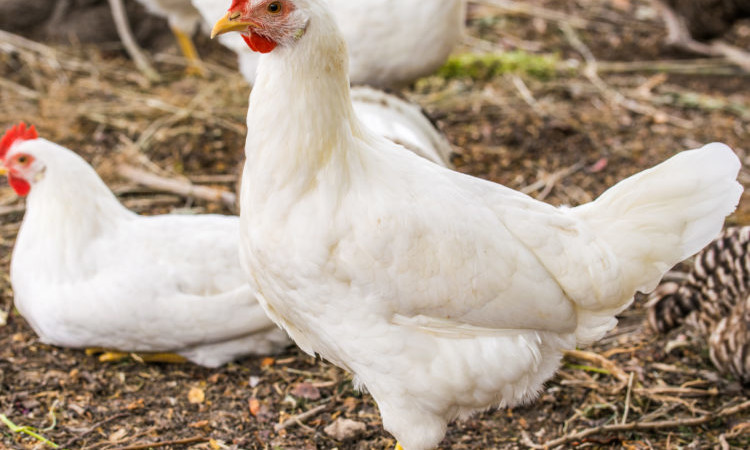

One of the fastest and easiest ways to put meat on the kitchen table is by raising your own broiler chickens. With a maturity rate faster than any other form of livestock, chickens can be mature and ready to eat in mere weeks depending on the breed. Selecting a breed for broiler chickens is important as some breeds mature and flesh out quickly and in different ways than others. For the purpose of fast, economical food, you want something that will grow quickly in order to be cost effective; the longer a bird takes to mature, the more money you will spend raising it, and the less return on investment in the end. Also important is taste, which is another reason to consider particular breeds for your meat needs.
When it comes time to select a breed, there are a few considerations:
White Hybrids are the type of bird most commonly sold at the grocery store. These birds are the result of a cross between White Cornish and White Plymouth Rocks and grow quickly, reaching target weight in just over six weeks. Being that these birds were bred specifically for their fast growth, they need to be butchered upon reaching their target weight; to let them continue to live will be setting them up for heart failure or bone issues because of their rapid growth patterns. It takes 2g of feed to get 1g of growth out of these birds and 75% of their body weight when alive will be edible after processing. This variety of bird also has less feathers that must be plucked, which makes them quicker and easier to clean than other breeds. The flavor of these birds is often bland or mild due to their low heat tolerance which results in a need for indoor housing as opposed to free ranging.
Colored Hybrids were developed in France but are seen plentifully in the United States as well. Many have red coloring but they come in other color varieties as well, just not white, such as Bronze and Grey Freedom Rangers. Their coloring aids in protection against aerial predators but does make them harder to pluck to the point of clean, neat skin. This breed is usually pasture raised so they do not grow as fast as White Hybrids. It takes these birds 3g of feed for each 1g of live weight, 70% of which is edible after about 12 weeks of life at which point target weight is reached. The flavor of these birds is richer than that of White Hybrids due to the limited free ranging they are adapted to due to moderate heat tolerance.
Heritage Breeds are often dual purpose birds able to both lay eggs and serve as meat chickens, such as is the case with Delaware, New Hampshire, Wyandotte, and Orphington breeds. These animals often have thinner breasts and contain more dark meat than hybrids due to their higher free range drive. These birds must eat 4lbs for every 1lbs of live weight with 65% of the bird being edible at 16 weeks of age, but don’t let this deter you. In many cases good things come to those who wait, and waiting for a Heritage Breed to mature will give you better tasting meat than that of other bird types. Since these birds are not affected by heat, they are known to move about and free range voraciously which enhances the flavor of their meat, making it richer than that of hybrids.
Birds that are not hybrid are slower to grow and do not do so quite as uniformly as a hybrid might. Because of this, you will have more of a wait on your hands before your chickens achieve target butchering weights, but if taste is a priority, this wait is worthwhile. Some Heritage Breeds do take longer than others to mature, so if you have a specific breed in mind, be sure to research it thoroughly before you commit; for example, Jersey Giants can take 6 months to fully mature. The ultimate choice when choosing a meat bird comes down to two things: how long you can wait and what you prefer to taste.
 Contact Jaguza Support
Contact Jaguza Support